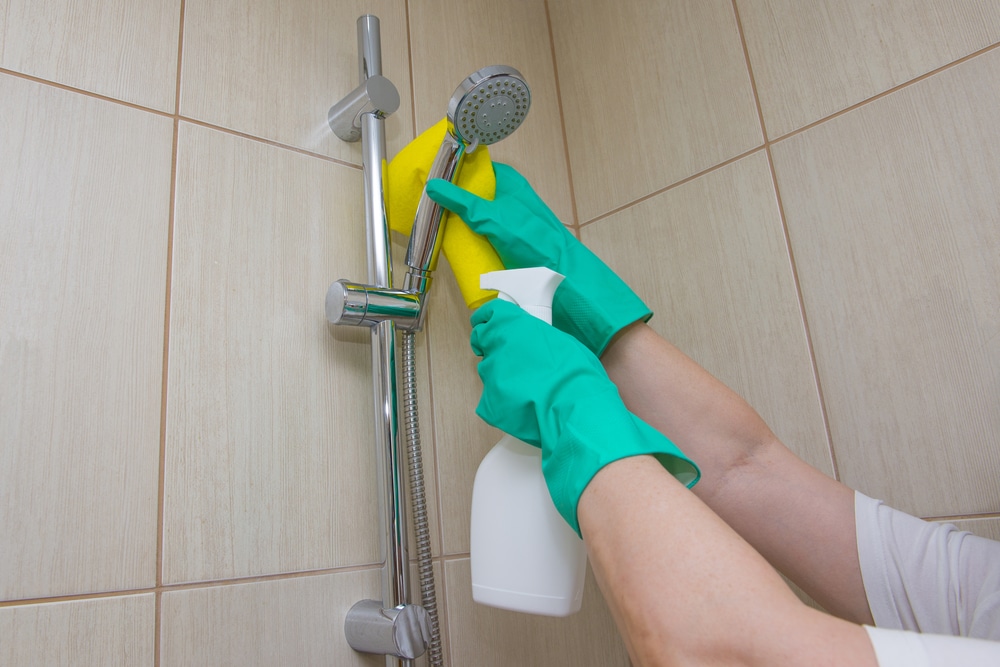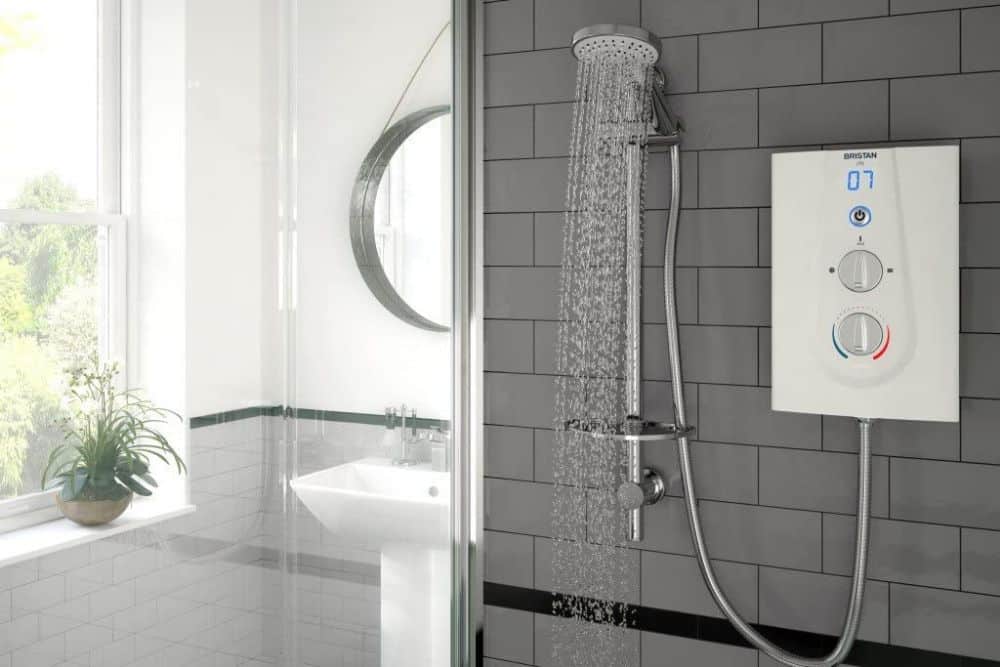Last Updated on
Are you ready to tackle the daunting task of learning how to descale electric showers? If so, then look no further. In this blog post, we’ll show you how to get started on the job and provide helpful tips along the way. From preparing for what’s ahead, learning how to properly descale an electric shower, cleaning up after it’s done and even preventative measures – everything is covered in one place. So let’s dive right in and learn about descaling electric showers.
Table of Contents:
- Preparing for the Job
- Descaling Your Electric Shower
- Cleaning Up After Descaling
- Preventative Measures
- Conclusion
Preparing for the Job
Prior to starting any work, make sure you possess the necessary equipment and supplies. Descaling an electric shower requires a few specific items that are easy to find in most hardware stores. Here is the list of tools and materials that you’ll definitely need to prepare::
Safety goggles:
To protect your eyes from any flying debris or water splashes.
Gloves:
To keep your hands safe from harsh chemicals and hot surfaces.
Screwdriver set:
To open up the casing of the shower unit if necessary.
Pliers or wrench set:
For removing nuts, bolts, and other fasteners during disassembly of the unit.
Descaler solution (specifically designed for descaling showers):
Follow instructions on packaging carefully as some solutions may be corrosive or toxic when mixed with other substances such as bleach or vinegar.
Cleaning cloths/rags/sponges/scrubbing brushes etc.:
For cleaning away residue after descaling process has been completed.
It’s time to commence the descaling process for your electric shower – now that all of the supplies have been acquired, let us explore what needs to be done.
Descaling Your Electric Shower
Descaling your electric shower is an important part of keeping it running smoothly and efficiently. Over time, limescale can build up in the pipes and cause blockages that reduce water pressure or even stop the flow altogether. Fortunately, descaling your electric shower isn’t too difficult a task – all you need is some vinegar, a few tools, and a bit of patience.

Once your descaler solution is ready, pour half of this mixture into each side of the unit through its open access points (where you removed its cover plates earlier). Allow this solution to sit inside for around 15 minutes before draining away as much as possible with an old cloth or towel placed underneath each tap outlet pipe respectively. This will help loosen any stubborn limescale deposits which may still remain after rinsing alone.
Then, reattach the cover plates securely using the screws provided. Test out whether everything works correctly by turning on the hot and cold taps at their source once more. If no issues arise, then congratulations – you have successfully descaled your electric shower.
By descaling your electric shower, you are taking the first step towards a cleaner and more efficient shower experience. Now that the groundwork has been laid, it’s time to tackle any leftover residue from descaling – let us explore how best to go about this in our subsequent segment.
Cleaning Up After Descaling
After descaling an electric shower, it is important to properly clean up the area. This includes disposing of any hazardous materials safely and properly.
When cleaning up after descaling, start by wearing protective gear such as gloves and a face mask. Gloves and a face mask should be worn to guard against potential contact with the caustic acid used in descaling, which could cause harm if it comes into contact with skin or eyes. It is also important to ensure that there are no open flames near the area due to the potential risk of fire from flammable vapours released during descaling.
Subsequent to the descaling process, any hazardous substances such as acid must be discarded properly. Make sure all containers are sealed tightly before disposal, preferably using plastic bags or airtight containers so that they don’t leak out onto surfaces or into drains where they could cause further damage or contaminate water sources. All hazardous waste should be disposed of at a designated facility according to local regulations and guidelines set forth by your municipality or county government agency responsible for environmental protection laws.
Once all hazardous materials have been disposed of, you can begin cleaning up the rest of the mess left behind from descaling your electric showerhead unit. Start by wiping down all surfaces with a damp cloth soaked in warm soapy water; this will help remove any residue left behind from chemical reactions during descaling as well as dirt and dust particles which may have accumulated over time on bathroom fixtures like faucets, showers heads etc Once everything has been wiped down thoroughly rinse off with fresh water until no soap suds remain on surfaces then dry completely with a soft cloth before reassembling parts back together again ready for use once more.
Finally, check around drain pipes for clogs caused by debris build-up which may have occurred during descaling. If necessary, use an appropriate plumbing snake tool (available at most hardware stores) to clear away blockages, ensuring smooth flow through pipes when running hot/cold taps afterwards. This will help prevent future problems related specifically to drainage issues within bathrooms. Let’s discuss more about preventing corrosion build-up in the next section.
Preventative Measures

One of the most effective ways to prevent limescale is by using a water softener. Water softeners work by removing minerals from hard water before they have a chance to build up on surfaces like pipes or fixtures in your bathroom. This will help keep limescale from forming and make cleaning easier as well.
Another option is installing a filter system for your electric shower head specifically designed to remove calcium and magnesium ions from hard water before they reach the nozzle. Different shapes and sizes of these filters are available, making it effortless to find one that works with your existing shower set-up. The benefit of this method is that it not only prevents limescale buildup but also helps improve the overall quality of your shower experience since filtered water tends to feel softer than unfiltered water when used for bathing or washing dishes, etc
Finally, if you want an easy way out then simply use distilled or bottled drinking water instead of tapwater for all of your needs including taking showers. Distilled/bottled waters contain very few minerals meaning there won’t be anything left behind after each use – making them perfect for preventing any scale buildup over time. Plus, these types of waters tend to leave skin feeling softer too due their lack of mineral content compared with regular tapwater so everyone wins here.
No matter what method you choose, staying on top of preventative maintenance will go a long way towards ensuring that your electric shower remains free from pesky limescale deposits. This will allow you to enjoy more efficient performance while saving yourself some hassle in the future.
Conclusion
Learning how to descale electric showers is a necessary task to keep them running smoothly and safely. While it may seem daunting, with the right tools and some elbow grease, you can descale your electric shower in no time. By following these steps and taking preventative measures such as regularly cleaning your showerhead, you can ensure that your electric shower will stay free of limescale buildup for years to come. So don’t be afraid to take on this job – just remember to always descale electric showers responsibly.
Paul is the type of person who never met a problem he couldn’t fix. He can always be found tinkering with something in his house, even if it isn’t broken! His tips and tricks are often shared on our site. He’s the one you call when something breaks because he has been known to improvise fixes for everything from leaky faucets to malfunctioning dryers.



